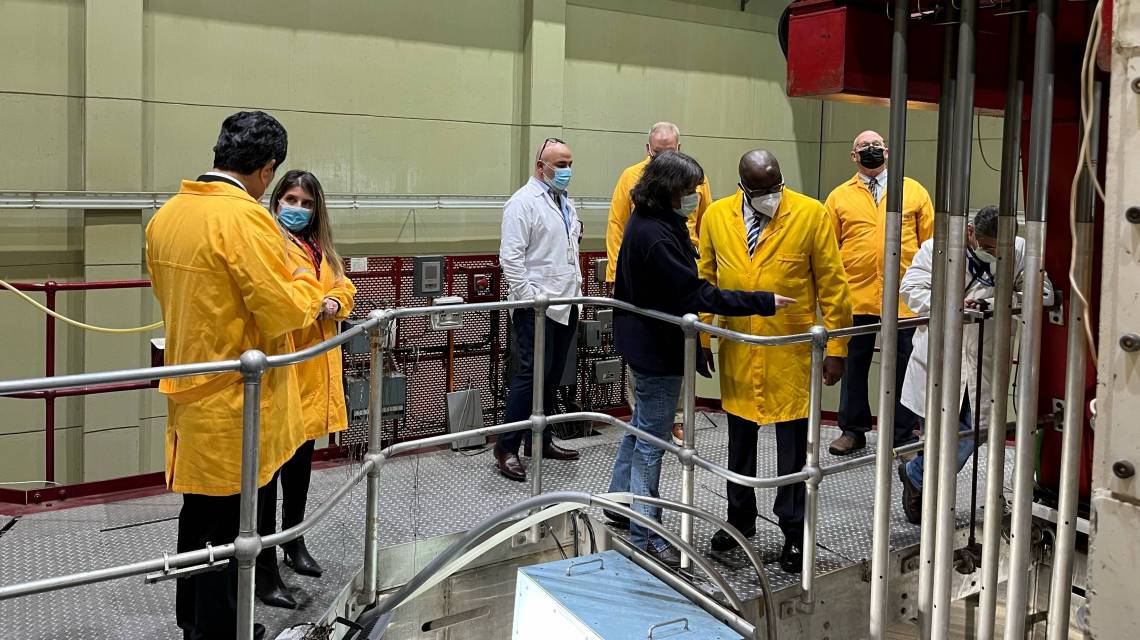An international team of experts completed the first IAEA Integrated Research Reactor Utilization Review (IRRUR) mission this month, carried out on the 5MW pool-type RECH-1 research reactor at the La Reina Nuclear Centre in Santiago, Chile. The IRRUR is a new IAEA review service, developed to assist countries in enhancing the utilization and sustainability of nuclear research reactor facilities. This mission, which took place from 4 to 8 July, followed a request from the Chilean Nuclear Energy Commission (CChEN).
Five experts from Belgium, Argentina, the United States, the IAEA and an observer from Peru in advance of the IRRUR mission taking place in Peru in August, joined the five-day mission. They carried out a thorough assessment of the way in which the RECH-1 research reactor is currently being used and its potential capabilities. They identified further utilization areas and feasible areas of research and development that the reactor can be used for and products and services that it can provide.
“The mission team found that there are many opportunities for expanded utilization of the RECH-1 reactor,” said Nuno Pessoa Barradas, an IAEA research reactor specialist leading the mission. “Therefore, one key recommendation is to develop and implement an outreach strategy for the reactor, as this will greatly help to expand its user community.”
Research reactors, unlike nuclear power plants, generate primarily neutrons rather than power, and are used for research, development, education and training purposes. They play a vital role across several fields, producing radioisotopes used in medicine, industry and agriculture. According to the IAEA Research Reactor Database, 223 research reactors are now in operation in 53 countries, and 24 new research reactor programmes are under planning and development.
Planning for the IRRUR mission in Chile began in July 2021, with a preparation mission for the RECH-1 research reactor conducted virtually by a team, followed by a virtual mission in December, due to COVID-19-related travel limitations. At that stage, the team provided a series of recommendations for the research reactor, one of which – the development of a neutron imaging system – has already been implemented with assistance from IAEA technical cooperation.
“With the new setup, neutron imaging could be more affordable and therefore more feasible for the reactor to develop, which opens new lines of research at the reactor,” said Lin-wen Hu, Senior Research Scientist at the Massachusetts Institute of Technology’s Nuclear reactor Laboratory, who took part in the mission. Neutron imaging, similar to x-ray radiography, is a non-destructive way of identifying the internal structure of manufactured items such as cultural heritage objects. Since the neutron imaging system was installed in June this year, tests have been carried out and the first neutron radiography has been produced.
Following the review mission this week, the team concluded that Chile is making progress in strengthening the utilization of the research reactor. They recommended, among other actions, the establishment of partnerships with stakeholders in the area of medical radioisotopes to identify those of interest for the country and forecast for future needs. The team also recommended initiating a research and development programme based on neutron beams, starting with utilization of the neutron imaging setup.







